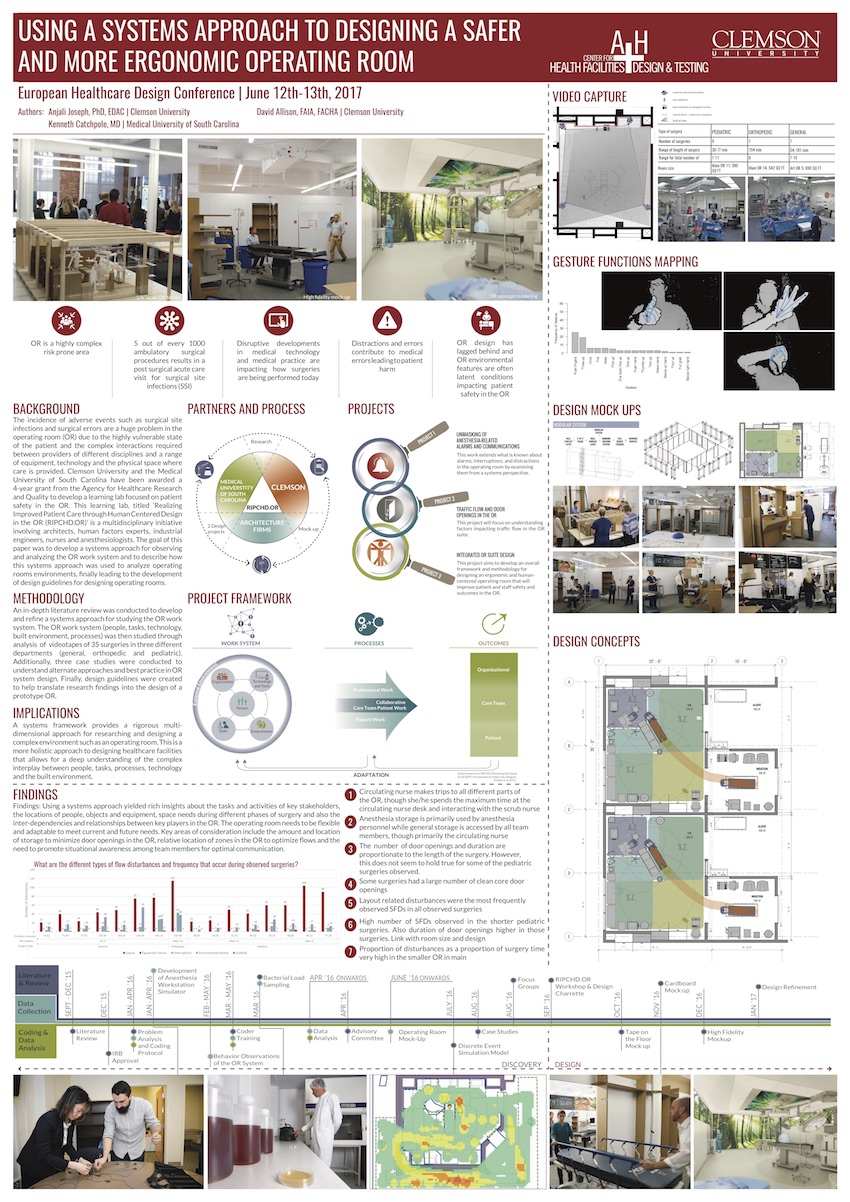Healthcare / Quality improvement
European Healthcare Design 2017
Using a systems approach to design a safer and more ergonomic operating room
By Anjali Joseph, Kenneth Catchpole, David Allison | 22 Jun 2017 | 0
Adverse events, such as surgical site infections and surgical errors, are a huge problem in the operating room (OR), owing to the vulnerable state of the patient and the complex interactions between providers of different disciplines and equipment, technology and the physical space where care is provided.
Abstract
Clemson University and the Medical University of South Carolina have been awarded a four-year grant to develop a learning lab focused on patient safety in the OR. This learning lab, titled ‘Realizing improved patient care through human-centered design in the OR (RIPCHD.OR)’, involves architects, human-factors experts, industrial engineers, nurses and anaesthesiologists.
Purpose:
The goal of this paper was to develop and describe a systems approach for observing and analysing the OR work system, leading to the development of design guidelines.
Methods:
An in-depth literature review was conducted to develop a systems approach for studying the OR work system (people, tasks, technology, built environment, processes), which was then studied through analysis of videotapes of 35 surgeries in three departments: general, orthopaedic and paediatric. Three case studies were conducted to understand alternate approaches and best practice in OR system design. Finally, guidelines were created to help translate research findings into the design of a prototype OR.
Results:
The systems approach yielded rich insights about: the tasks and activities of key stakeholders; the locations of people, objects and equipment; space needs during different phases of surgery; and the inter-dependencies and relationships between key players in the OR. Key areas of consideration include: the amount and location of storage to minimise door openings in the OR; relative location of zones to optimise flows; and the need to promote situational awareness among team members for optimal communication.
Implications:
A systems framework provides a rigorous multi-dimensional approach for researching and designing a complex environment, such as an operating room. This is a more holistic approach to designing healthcare facilities that allows for a deep understanding of the complex interplay between people, tasks, processes, technology and the built environment.
Organisations involved


